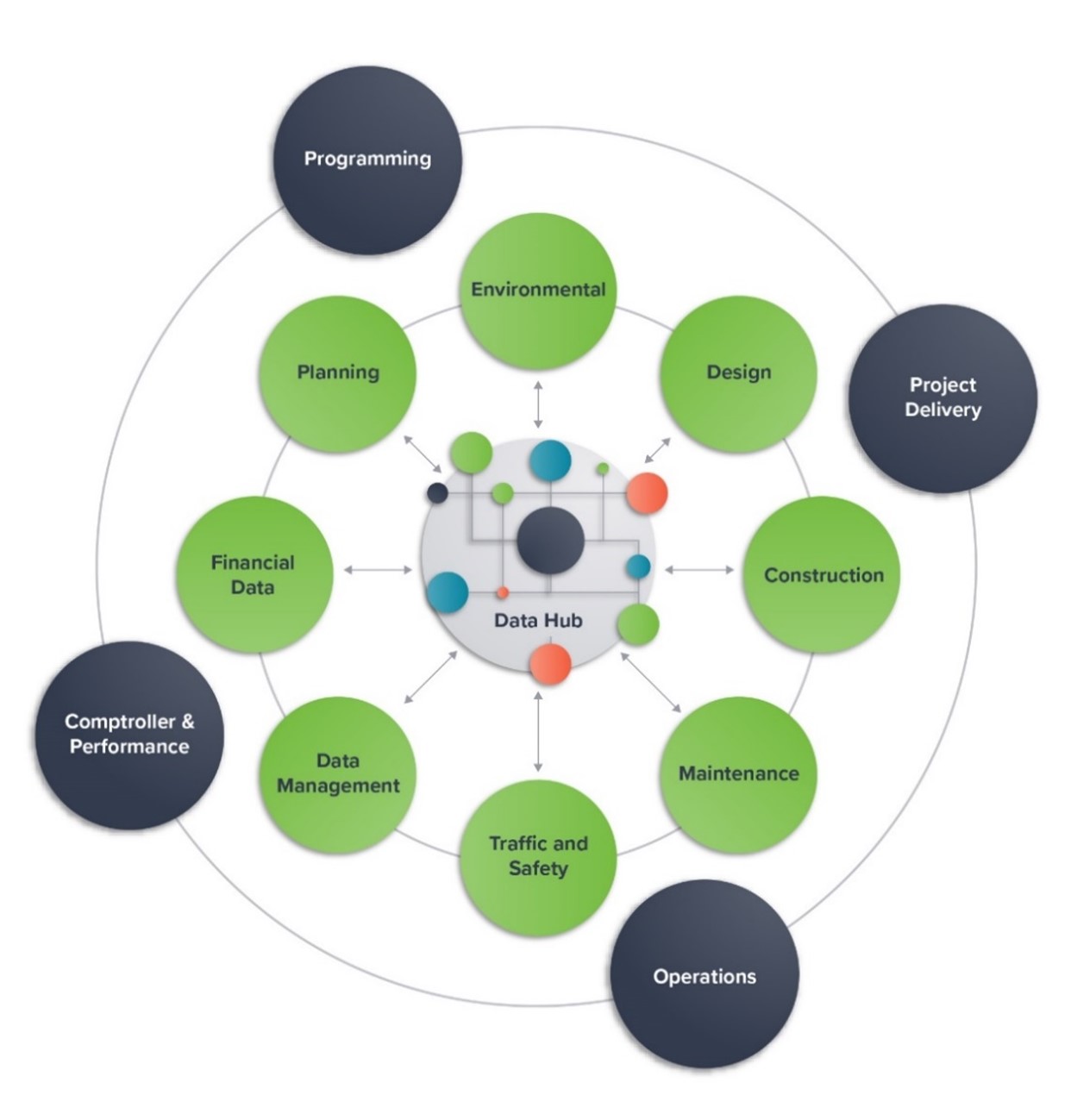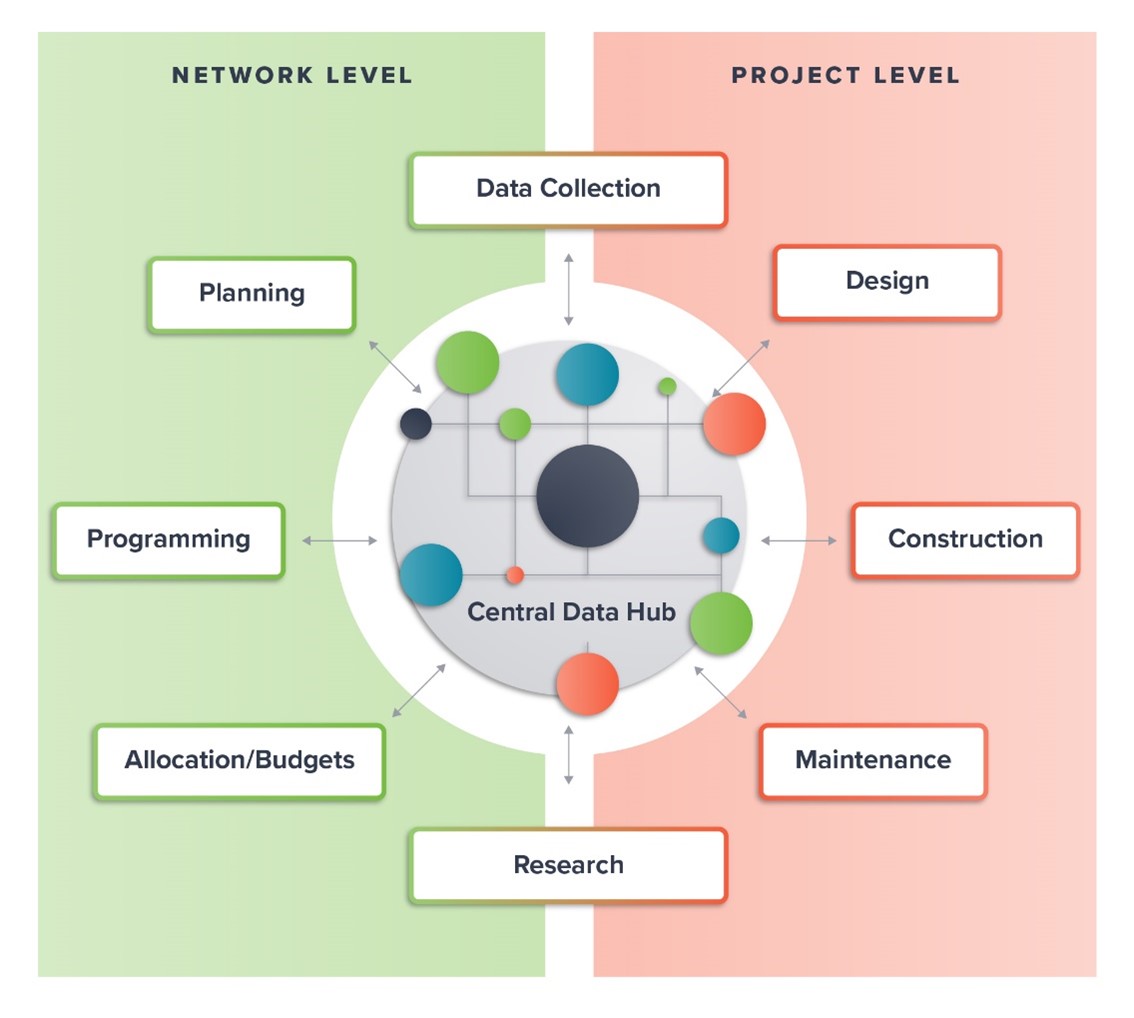Organizing Data to Link Pavement Design, Pavement Management, and Transportation Asset Management (TAM)
Both pavement management and pavement design create and maintain terabytes of data about existing pavement structure, pavement condition, construction history, and pavement design calculations. Aligning data collection processes can greatly enhance an agency's capabilities to support pavement management and pavement design if the systems are designed to share data and information in a standard and efficient way.
Additionally, pavement management and pavement design rely on accurate traffic data including total volume and classification, truck loading, axle load spectra, and variations in loading with the time of day. Projected traffic is typically developed by the planning office of a Department of Transportation (DOT).
A key to managing these data and information is having a data hub that supports sharing of data across assets and across the project development cycle, from planning to design and eventually maintenance, as illustrated by the figure below. Integration of pavement related data is often supported by geographic information system (GIS) or linear referencing system (LRS) for easy retrieval and conflation of data.

A central data hub can connect and integrate network and project-level data related to pavement management. The central data hub provides a means to allow each organizational unit to work with the others and to share data directly. For example, the pavement management system (PMS) serves as a feeder of information to the project delivery process. By integrating the PMS outputs with the central data hub planning, highway design, and pavement design, staff can all work together using the PMS data without needing to each interact with the PMS unit.

Central data hub links organizational units. (Source: FHWA 2019)
Data integration can begin before establishing a central data hub, but without a central data hub, integration takes more active communications between organizational units. Before a hub is established, staff will need to manually align data sets based on location data collected to different standards, e.g. lattiude and longitude vs. linear referencing. This approach can be manageable for staff who have database skills and are very familiar with the data. However, it may not be until the data are fully integrated through the data hub that less-technical staff, including managers and executives, are able to realize the benefits of data integration. To establish and manage the data hub, agencies may rely on contractors or an external Information Technology department. It is important that agencies do not underestimate the staff time and resources from the program offices necessary to support the data hub so it is useful to the intended users
REFERENCES
Federal Highway Administration (FHWA). 2019. Handbook for Including Ancillary Assets in an Asset Management Program. FHWA. Washington, DC.
Go back to the main linkages page.
Central data hub. (Source: FHWA 2019)

